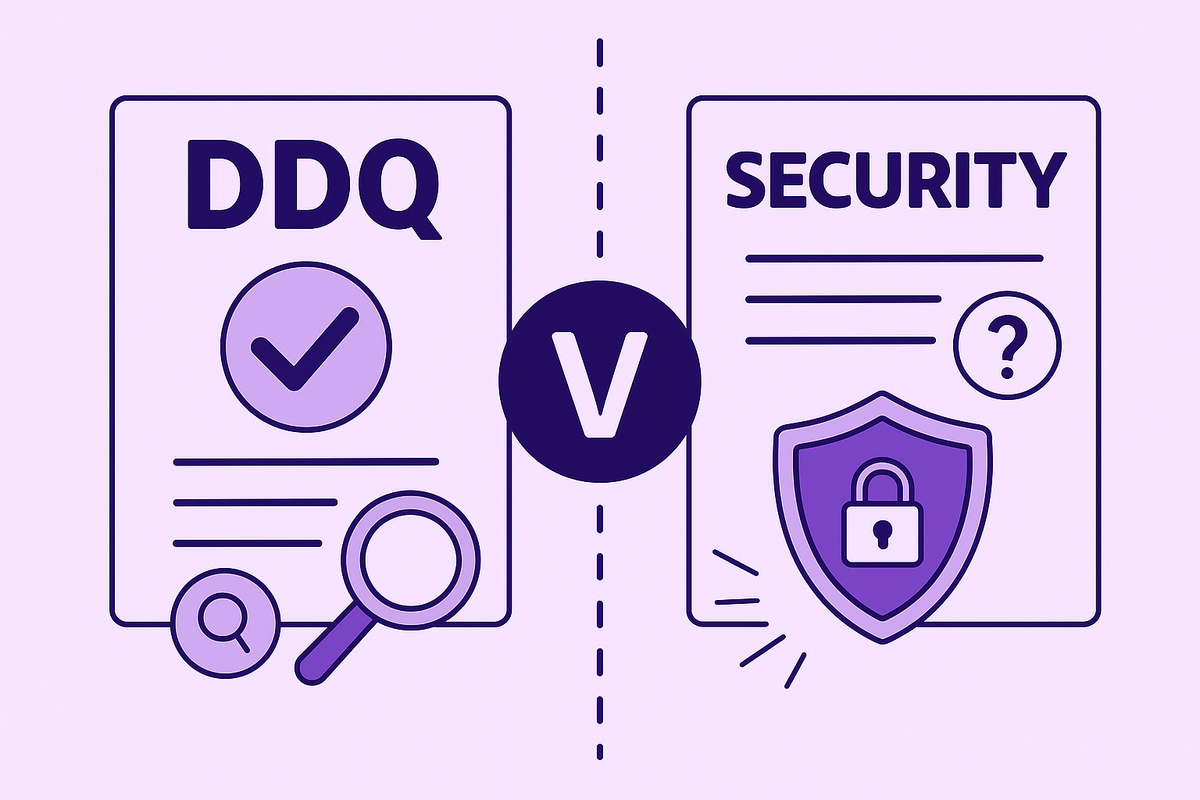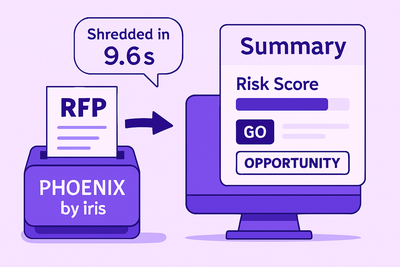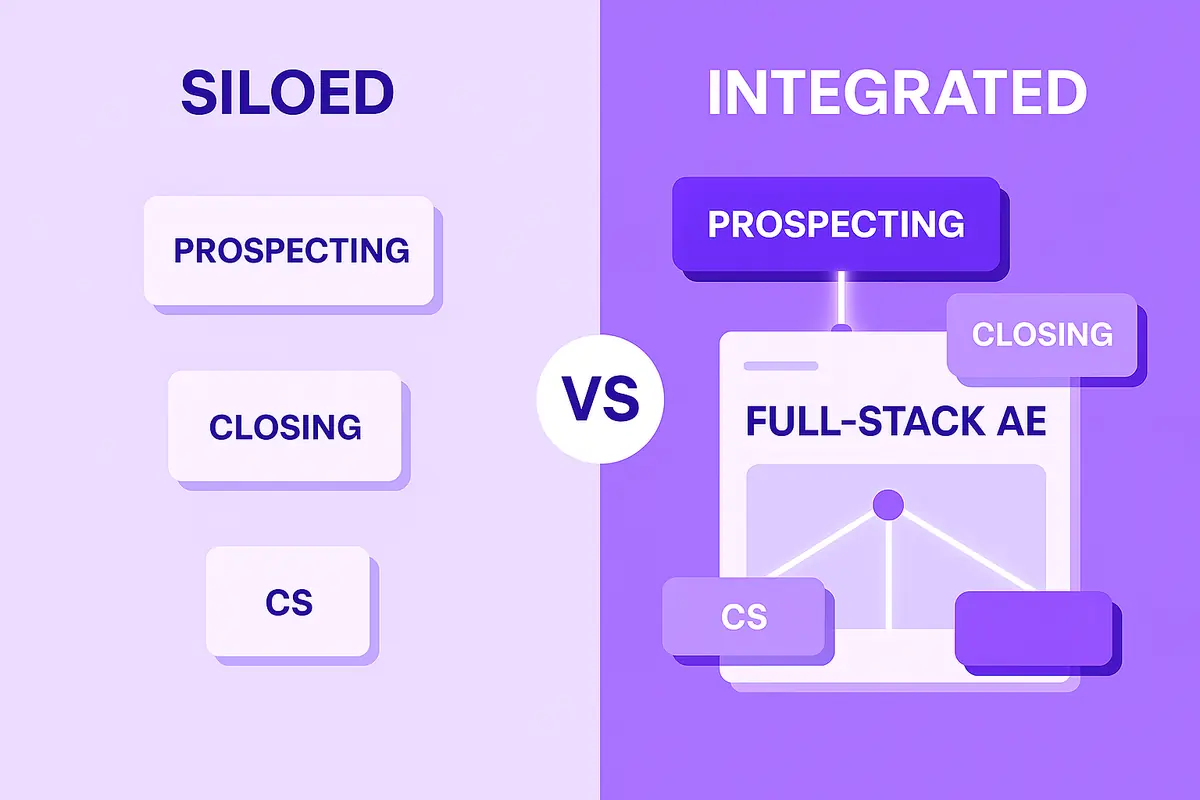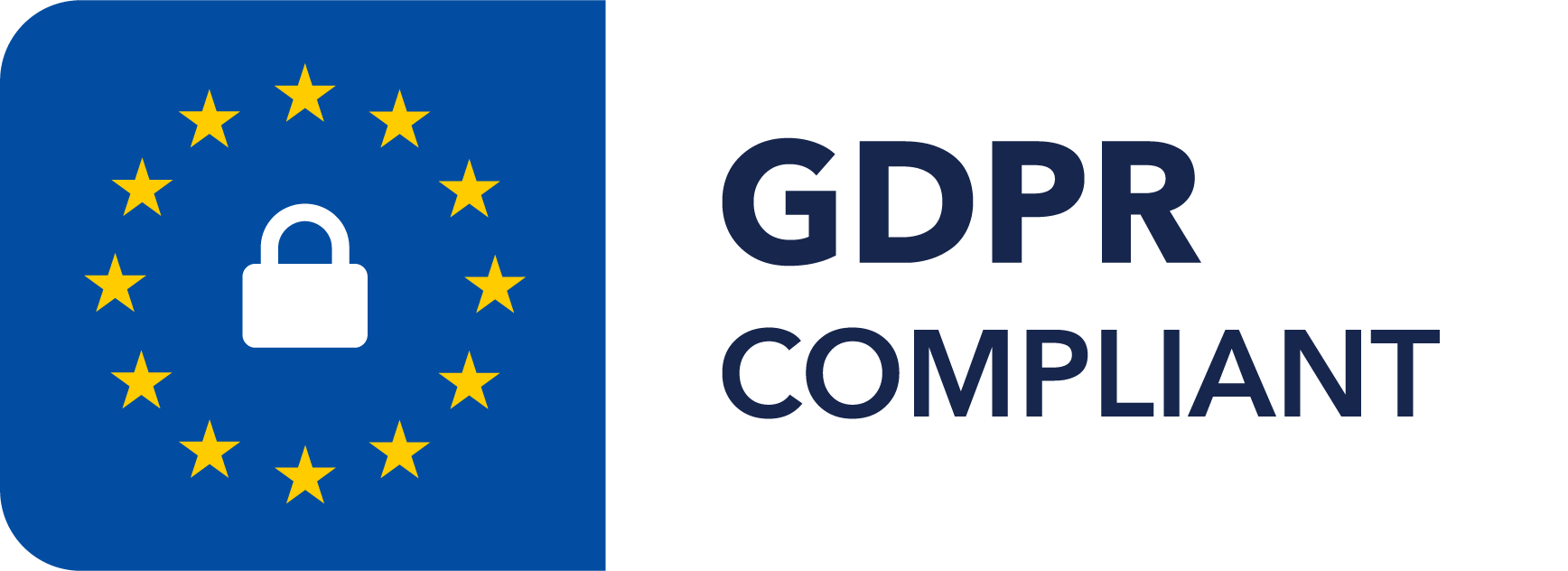5 Reasons You Keep Losing RFPs (& How to Win)
June 25, 2025
By
Evie Secilmis

Here’s a stat that should stop you in your tracks:
20% of RFPs that companies start are never finished.
That’s one in five missed opportunities — not because the product wasn’t a fit, but because the process fell apart.
Slow responses, repetitive grunt work, and clunky collaboration don’t just delay deals — they derail them entirely. Below are the five silent killers that are likely costing you more revenue than you think.
What’s at Stake
Every RFP your team touches is a high-intent signal from a buyer. When that process breaks down, the costs go far beyond the missed deal:
- Lost pipeline: Delays push prospects toward faster competitors.
- Burnout: SEs and SMEs end up carrying the weight of broken workflows.
- Wasted resources: Redundant work eats time that could be spent on net-new opportunities.
- Reputation risk: Incomplete or inconsistent answers erode trust with buyers.
When one in five RFPs gets abandoned mid-process, you’re not just losing deals — you’re signaling to the market that your team isn’t built to win them.
1. You’re Too Slow
Buyers don’t chase you for answers — they move on. If it takes weeks to assemble a response, you’re signaling to your buyer that you're disorganized or low-priority.
One team reduced review cycles from 4.2 rounds to just 1.8. That’s fewer back-and-forths, faster approvals, and less buyer fatigue.
Another cut total RFP turnaround time by 60%. Speed wins in competitive deals. Being first to reply — with polish — gives you the edge.
Fix it: Use AI to auto-fill known answers, flag inconsistencies, and surface the most up-to-date content. Eliminate bottlenecks before your prospect loses interest.
2. Your Answers Are Inconsistent
Nothing breaks trust faster than conflicting information. When one answer says "yes" and another says "it depends," buyers start wondering what else might be off.
Teams using centralized RFP software improved technical accuracy by 34%. That means fewer clarifying questions and more confidence from decision-makers.
One company saw a 41% improvement in compliance scores. That’s not just about risk mitigation — it signals credibility to your buyer.
Fix it: House your content in one place, with approval workflows and audit trails. When everyone pulls from the same source of truth, your answers stop undermining your credibility.
3. You Rely on Heroes, Not Systems
Your best SE shouldn't have to rescue every RFP. If responses only get done because someone stayed late or skipped PTO, you're not running a process — you're gambling with burnout.
One org slashed SE time spent on RFPs from 50% to 12%. That freed up their technical experts to actually sell and support, not just scramble.
SME involvement dropped by 67%, thanks to better answer libraries and first-draft automation.
They also saw knowledge reuse skyrocket by 312%, turning every completed RFP into a strategic asset — not a one-off project.
Fix it: Build a system that scales with your team. AI-first workflows enable anyone to start an RFP — and only escalate when human input is truly needed.
4. You Treat RFPs Like Admin Work
Too often, RFPs get treated as a chore — squeezed in between “real” work. But your response is the pitch. It’s your shot to win, and buyers notice when you mail it in.
One team achieved 4x pipeline growth without adding headcount, simply by automating the repetitive parts of the process.
They also boosted win rates by 25%. That’s not from writing more RFPs — it’s from writing better ones, faster.
Fix it: Connect RFPs to your GTM motion. Link projects to Salesforce, trigger workflows in Slack, and keep everything visible — so RFPs become a seamless part of how you close deals.
5. You’re Not Learning from Each One
If every new RFP starts with a blank doc, you’re wasting effort and missing insights. Great teams build a flywheel — where every question answered improves the next one.
One company increased customer-specific customization 3.2x, by tracking patterns and tailoring answers accordingly.
Their teams also reported better work-life balance and job satisfaction, because the process felt human, not chaotic.
Fix it: Instrument your RFP workflow. Track which answers win, where delays happen, and which sections are reused most. Turn insights into impact — and build a smarter response engine with every deal.
How to Get Started
If you suspect your RFP process is leaking revenue, start by auditing your last 3–5 projects:
- How long did each one take from start to submission?
- How many team members were pulled in?
- How many answers were reused vs rewritten?
- How many RFPs were abandoned or submitted late?
Even a rough benchmark will show you where time is being lost and where automation could help. From there, explore AI RFP software options that fit your stack — ones that plug into your CRM, support content reuse, and offer multi-user collaboration with audit trails.
TL;DR: Your RFP Workflow Is Either Winning or Losing You Revenue
You don’t need a better team.
You need a better system.
Because even the best content falls flat when it's late, inconsistent, or buried in someone’s inbox. With AI-powered RFP software, you can reclaim lost deals, shorten timelines, and give your buyers the confidence to say yes.
Share this post
Link copied!



















